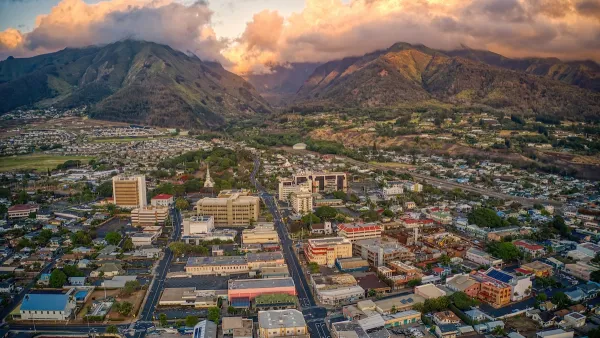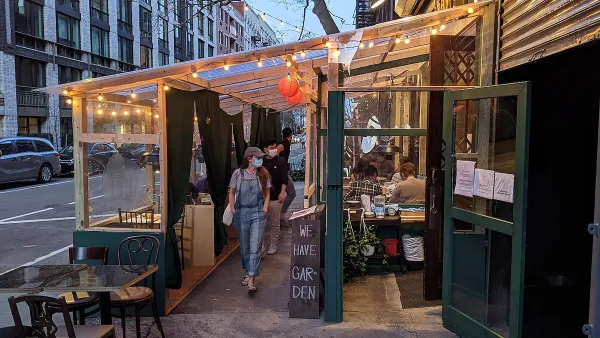Bakken crude is considered more volatile than other types of oil, which presents a safety problem when moved by rail. New regulations approved Tuesday require oil producers to separate flammable and volatile liquids prior to shipment by rail.
The fatal explosion of an oil unit train in Quebec last summer, killing 47 and leveling downtown Lac Mégantic, originated from North Dakota, as did many other oil trains associated with fiery explosions. On Jan. 2, "federal officials said (Bakken) crude oil being shipped by rail from the Northern Plains across the United States and Canada may be more flammable than other types of oil," reported Al Jazeera in January.
While the Federal Railroad Administration has released new regulations on transporting crude by rail, these new regulations [PDF] from the North Dakota Industrial Commission are the first ones we've reported from the Peace Garden State.
"The new regulations will require producers of Bakken crude to process their product through mandated temperatures and pressures that regulators hope will remove much of the butane, propane and other volatile liquids commonly found in the North Dakota crude," writes Clifford Krauss, energy reporter for The New York Times. Krauss also refers to these liquids as natural gas liquids (NGLs).
Once the rules are in force early next year, transported North Dakota crude oil will have a similar volatility to that of automobile gasoline, which should decrease the risk and size of any fire that might occur once a rail car is punctured in an accident, according to state regulators.
The regulation was opposed by oil companies who said they "are not needed and will increase production costs. With oil prices in sharp decline, the added cost to buy and run equipment to conform to the new temperature and pressure standards will be particularly onerous," writes Krauss.
However, "oil stabilization," as it is called, is routinely done from shale oil in the nation's number one oil-producing state, wrote Justin Mikulka of DeSmog Blog in October about oil shipped via pipeline from the Eagle Ford formation in Texas, perhaps contributing to reasons why pipelines are considered safer than rail when it comes to shipping oil.
Myron Goforth, president of a stabilizer leasing company in Houston, explained this to Reuters, saying, "Pipeline specifications require certain pressure limits that pretty much force companies to strip out NGLs." Rail companies have no such requirements.
"Oil companies rely on the trains because the Bakken shale field has been developed so quickly and adequate pipelines do not exist in and around North Dakota," writes Krauss.
Mikulka suggests another financial reason why oil producers opposed the N.D. regulation: removing the NGLs makes the crude less valuable to refineries.
FULL STORY: North Dakota Regulators Tell Producers to Filter Crude Oil of Flammable Liquids

Planetizen Federal Action Tracker
A weekly monitor of how Trump’s orders and actions are impacting planners and planning in America.

Maui's Vacation Rental Debate Turns Ugly
Verbal attacks, misinformation campaigns and fistfights plague a high-stakes debate to convert thousands of vacation rentals into long-term housing.

Restaurant Patios Were a Pandemic Win — Why Were They so Hard to Keep?
Social distancing requirements and changes in travel patterns prompted cities to pilot new uses for street and sidewalk space. Then it got complicated.

In California Battle of Housing vs. Environment, Housing Just Won
A new state law significantly limits the power of CEQA, an environmental review law that served as a powerful tool for blocking new development.

Boulder Eliminates Parking Minimums Citywide
Officials estimate the cost of building a single underground parking space at up to $100,000.

Orange County, Florida Adopts Largest US “Sprawl Repair” Code
The ‘Orange Code’ seeks to rectify decades of sprawl-inducing, car-oriented development.
Urban Design for Planners 1: Software Tools
This six-course series explores essential urban design concepts using open source software and equips planners with the tools they need to participate fully in the urban design process.
Planning for Universal Design
Learn the tools for implementing Universal Design in planning regulations.
Heyer Gruel & Associates PA
JM Goldson LLC
Custer County Colorado
City of Camden Redevelopment Agency
City of Astoria
Transportation Research & Education Center (TREC) at Portland State University
Jefferson Parish Government
Camden Redevelopment Agency
City of Claremont


























